
The Grand Central Hotel, later renamed the Broadway Central Hotel, was a hotel at 673 Broadway, New York City, that was famous as the site of the murder of financier James Fisk in 1872 by Edward S. Stokes.

Playwrights Horizons is a not-for-profit American Off-Broadway theater located in New York City dedicated to the support and development of contemporary American playwrights, composers, and lyricists, and to the production of their new work.
The Adelphi Theatre, originally named the Craig Theatre, opened on December 24, 1928. The Adelphi was located at 152 West 54th Street in Manhattan, with 1,434 seats. The theater was taken over by the Federal Theater Project in 1934 and renamed the Adelphi. The theater was renamed the Radiant Center by The Royal Fraternity of Master Metaphysicians in 1940. It was then the Yiddish Arts Theater (1943), and renamed the Adelphi Theater on April 20, 1944, when it was acquired by The Shubert Organization.

Gallagher's Steakhouse is a steakhouse restaurant at 228 West 52nd Street in the Theater District in Manhattan, New York City. It was founded in November 1927 by Helen Gallagher, a former Ziegfeld girl, and wife of Edward Gallagher (1873–1929), and Jack Solomon, a colorful gambler with a large loyal following from the sporting element. These were the days of Prohibition and Gallagher's was one of the first speakeasy gathering places for gamblers, sports figures, and stars of Broadway. There is now a location in the New York-New York Hotel & Casino in Las Vegas.

The Astor Theatre was located at 1537 Broadway, at West 45th Street in Times Square in New York City. It opened September 21, 1906, with Shakespeare's A Midsummer Night's Dream and continued to operate as a Broadway theatre until 1925. From 1925 until it closed in 1972, it was a first-run movie theater.
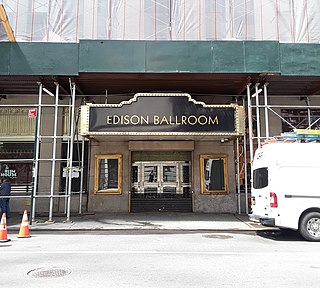
The Edison Theatre was a Broadway theatre in the Hotel Edison at 240 West 47th Street in Midtown Manhattan, New York City. Opened in 1931 as the hotel's ballroom, it became the Arena Theatre on May 31, 1950, with a revival of George Kelly's The Show Off. The following year it was returned to the hotel's ballroom and remained as such until the early 1970s, when it was re-converted to a theatre. Its most notable production was Oh! Calcutta!, which opened on September 24, 1976, and ran for 13 years, with a total of 5,959 performances. Other shows staged here included Don't Bother Me, I Can't Cope, Me and Bessie, Sizwe Banzi is Dead, The Island, and Love Letters.

The Allerton Hotel for Women, today known as Hotel 57, is a hotel located at 130 East 57th Street in the New York City borough of Manhattan. It is a seventeen-story brick, limestone, and terra cotta building designed by Arthur Loomis Harmon in 1920. It was built on the southwest corner of Lexington Avenue and 57th Street by the Allerton House Company at a cost of $700,000. It originally had stores on its ground floor. The hotel intended to accommodate six hundred business and professional women and also shelter young girls. When completed in 1923, the Allerton Hotel had room for four hundred tenants. Its occupancy was filled prior to completion and there was a long waiting list. After opening it was so popular that another establishment of its kind was anticipated.

54th Street is a two-mile-long, one-way street traveling west to east across Midtown Manhattan in New York City.
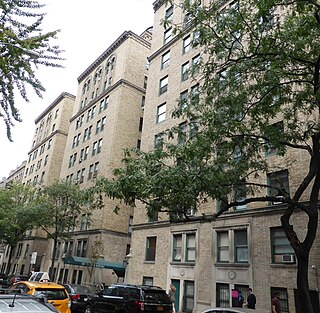
The Whitby is the name of the residential property at 325 West 45th Street in Hell's Kitchen, Manhattan, New York. The Whitby was designed by architect Emery Roth and built by Bing & Bing general contractors. It was originally commissioned as a hotel by The Gresham Realty Company in 1924 and opened for business on October 1, 1924. The building was converted into a residential cooperative in 1988 by Premiere Marketing Services. The 10-story dwelling between Eighth and Ninth Avenues has 215 apartments.

Pike's Opera House, later renamed the Grand Opera House, was a theater in New York City on the northwest corner of 8th Avenue and 23rd Street, in the Chelsea neighborhood of Manhattan. It was constructed in 1868, at a cost of a million dollars, for distiller and entrepreneur Samuel N. Pike (1822–1872) of Cincinnati. The building survived in altered form until 1960 as an RKO movie theater, after which it was replaced by part of Penn South, an urban renewal housing development.

The Gaiety Theatre was a Broadway theatre at 1547 Broadway in Times Square, Manhattan, New York City from 1909 until 1982, when it was torn down.
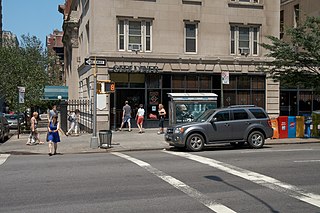
The Cornwall, at 255 West 90th Street, is a luxury residential cooperative apartment building on the Upper West Side of Manhattan, New York City. Located on the northwest corner of Broadway and 90th Street, it was designed by Neville & Bagge and erected in 1909. The developers were Arlington C. Hall and Harvey M. Hall. The twelve-story brick and stone building is noted for its elaborate balcony and window detail, and the "spectacular" design of its "extraordinary" ornate Art Nouveau cornice, which the AIA Guide to New York City called "a terra-cotta diadem." In 1991, the building's owner-occupants paid $600,000 to have the cornice and ornamented balconies replaced with terra cotta replicas of the originals.

The Madison Square North Historic District is in Manhattan, New York City, and was created on June 26, 2001, by the city's Landmarks Preservation Commission.

Shubert Alley is a pedestrian alley in the Theater District of Midtown Manhattan in New York City. The alley, a privately owned public space, connects 44th and 45th Streets and covers about 6,400 square feet (590 m2). It runs through the middle of a city block, parallel to Eighth Avenue to the west and Broadway to the east. The western half of the alley abuts the Shubert and Booth theaters, while the eastern half is adjacent to One Astor Plaza. Because it is near several major theaters, the alley has been considered the geographical center of Broadway theatre.
Harry B. Mulliken was an early twentieth-century American architect and developer who built many of his works in New York City. Mulliken's apartment and hotel buildings are remarkable for their Beaux-Arts-style and broad use of architectural terra cotta set around flat, and often red, brick.

Central Theatre was a Broadway theatre in New York City built in 1918. It was located at 1567 Broadway, at the southwest corner with 47th Street, and seated approximately 1,100 patrons. The architect was Herbert J. Krapp. The theatre was built by the Shubert family on a site previously occupied by the Mathushek & Son piano factory.
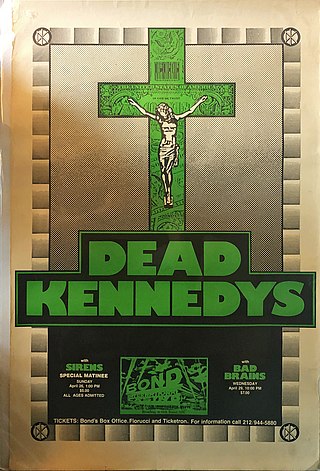
Bond International Casino was a nightclub and music venue located on the east side of Broadway between 44th and 45th Streets near Times Square, New York City.

Albemarle Hotel was located at 1101 Broadway in the Flatiron District of Manhattan, New York City. Built in 1860 and overlooking Madison Square, it was one of the largest hotels on the avenue in its day.
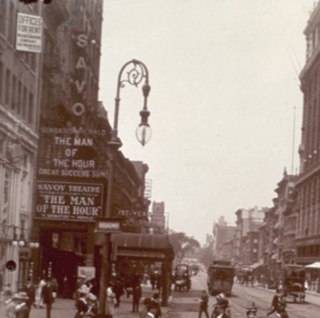
The Savoy Theatre was a Broadway theatre at 112 West 34th Street in Midtown Manhattan, New York City. It opened in 1900. It was converted to a cinema around 1910, until it was closed in early 1952 and then demolished.


















